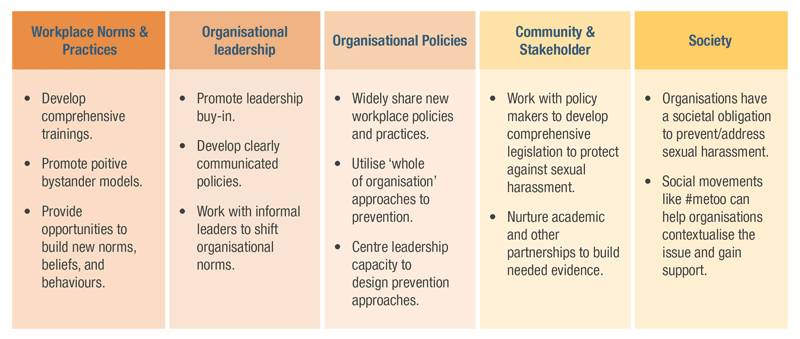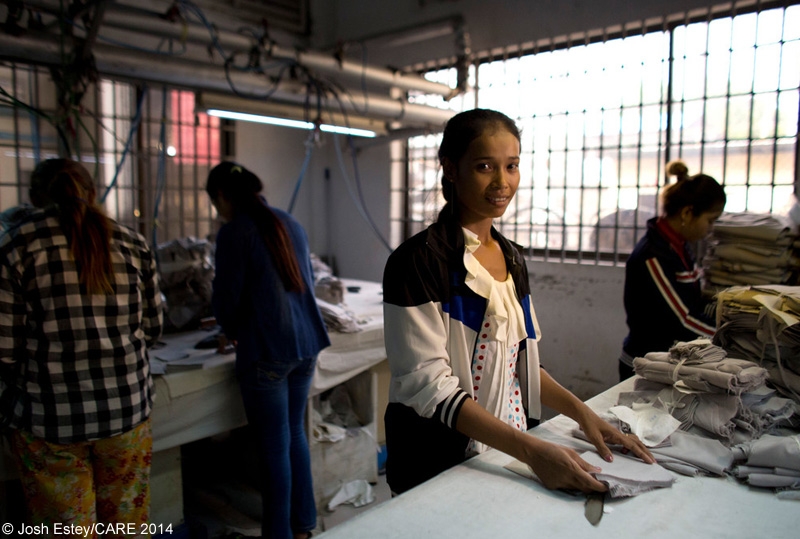At individual workplace level, however, sexual harassment continues to be underreported. This impacts organisational capacity to assess its prevalence. It also affects the ability of employers to measure the effectiveness of prevention interventions and identify the most effective ways to proactively prevent unwanted behaviour.
Identifying what works
CARE recently reviewed existing evidence on effective approaches to reducing sexual harassment in the workplace. WHAT WORKS? Preventing and responding to sexual harassment in the workplace: A rapid review of evidence uses systematic review methods and pre-defined inclusion criteria, drawing on learnings from:
- organisational development literature on workplace change, social psychology and public health evidence;
- evidence from development studies to address issues of context and culture.
The evidence shows significant convergence around several themes, including:
- the importance of sustained leadership engagement and commitment;
- broader efforts to prevent sexual harassment by shifting social norms;
- ‘whole organisation’ approaches that include formalised governance approaches and policies, effective complaints mechanisms and ongoing staff training;
- embedding organisational approaches in a broader commitment to gender equality.

Figure 1: The recommendations from CARE’s evidence review can be summarised in terms of the communal, social, and structural factors that can impact a person’s experience of violence
Using evidence to inform practice - working with the garment industry in the Mekong region
CARE is using these findings to inform our work with garment factories in the Mekong region, where we work with the garment industry in Cambodia, Laos, Myanmar and Vietnam. These are some approaches we are using:
Engaging leadership: As well as working with factory HR managers, CARE has started hosting special events just for senior leaders and factory owners. Improved recording of sexual harassment incidents can only take place when managers comprehend how this can be a positive rather than a negative. Gaining the backing of top management is key to ensure production managers support workers taking time to join training.
Shifting social norms: Using video dramas featuring relatable characters, training sessions are challenging bystander responses and modelling behaviour where women are supporting their peers to speak out about harassment. At the very least this has led to much more discussion of sexual harassment with workers reporting people are more likely to call out those who make inappropriate remarks or gestures.
Using a comprehensive approach: In the Mekong region CARE works with factory management in many ways, not just with training. HR teams are supported to integrate sexual harassment policies into their systems, to set up effective ways for workers to report, and to develop sexual harassment committees which then take up the ongoing training of workers.
Providing gender equality training: Senior managers receive training on gender and gender-based violence to challenge ingrained views and encourage them to see the value of equality in the workplace.
Want to learn more?
Read the What Works? full report and summary.
Enhancing Women’s Voice to STOP Sexual Harassment (STOP) is supported by the Australian Government, Department of Foreign Affairs and Trade, through the Gender Action Platform and the Australian NGO Cooperation Program.



